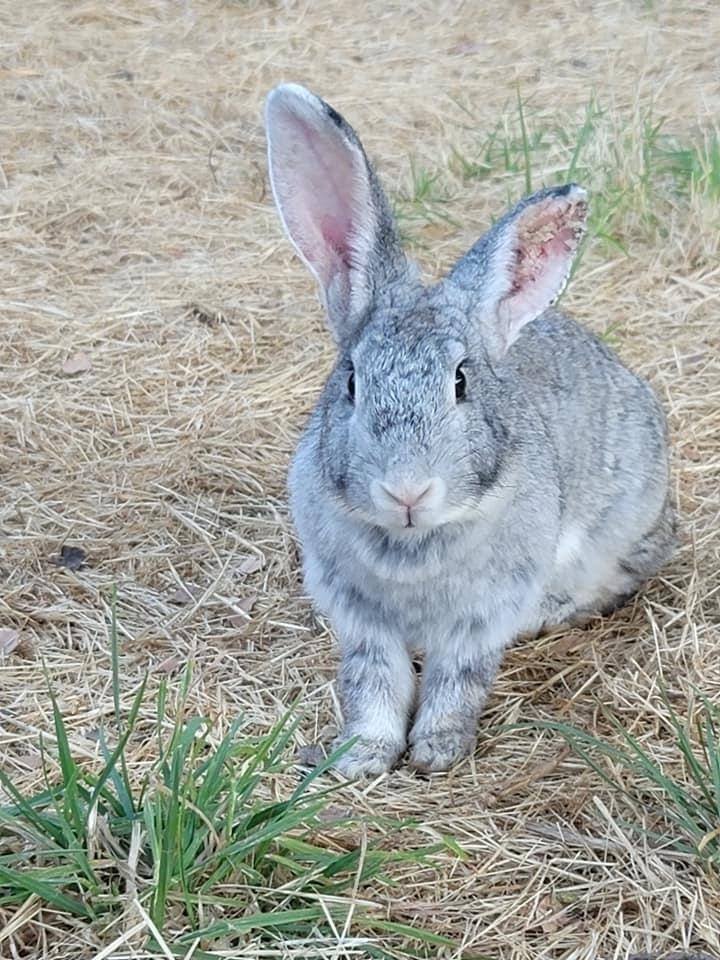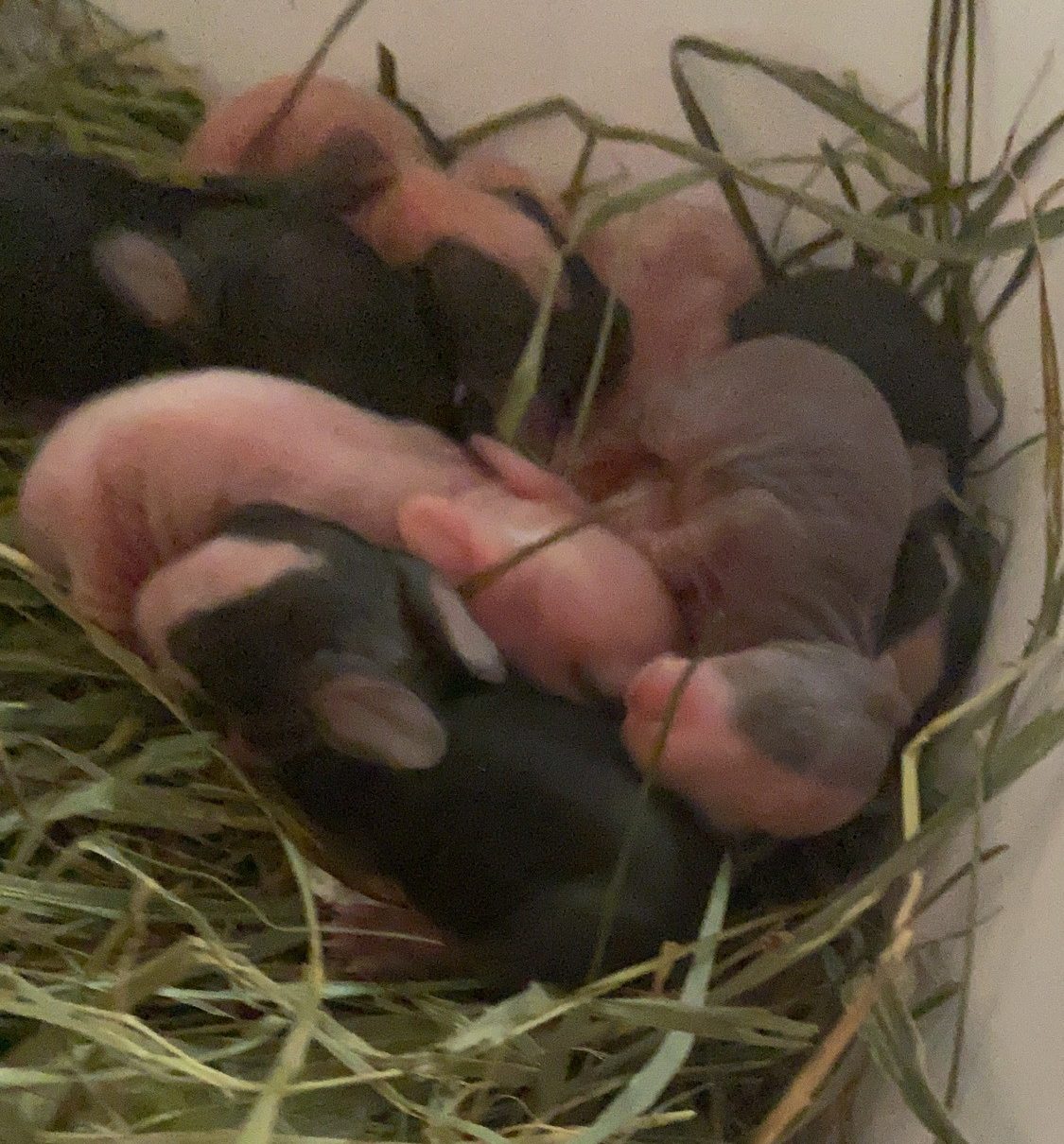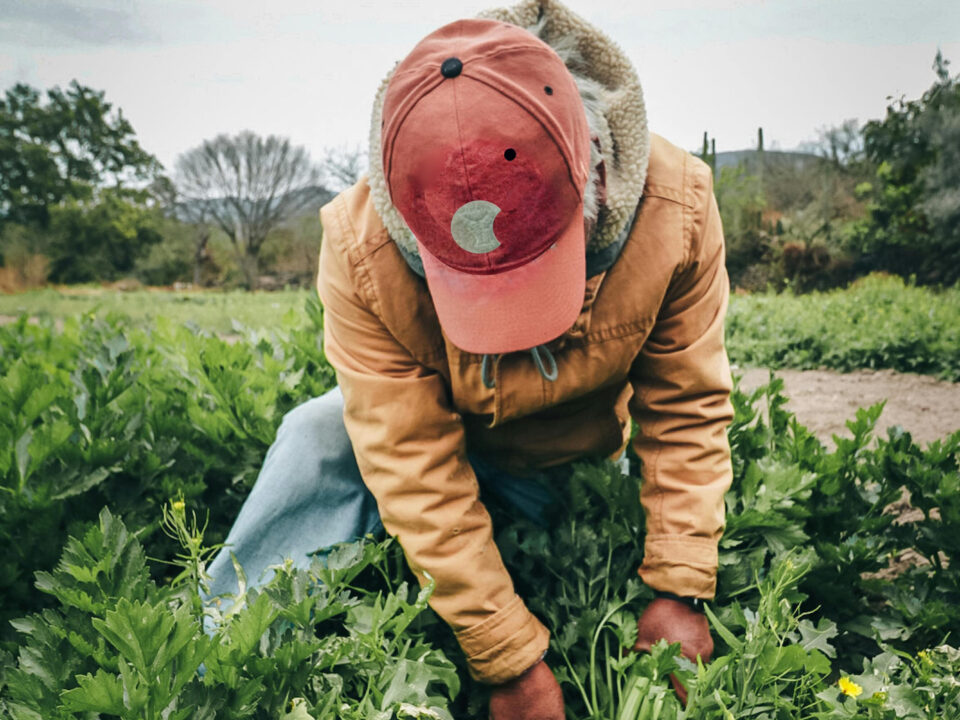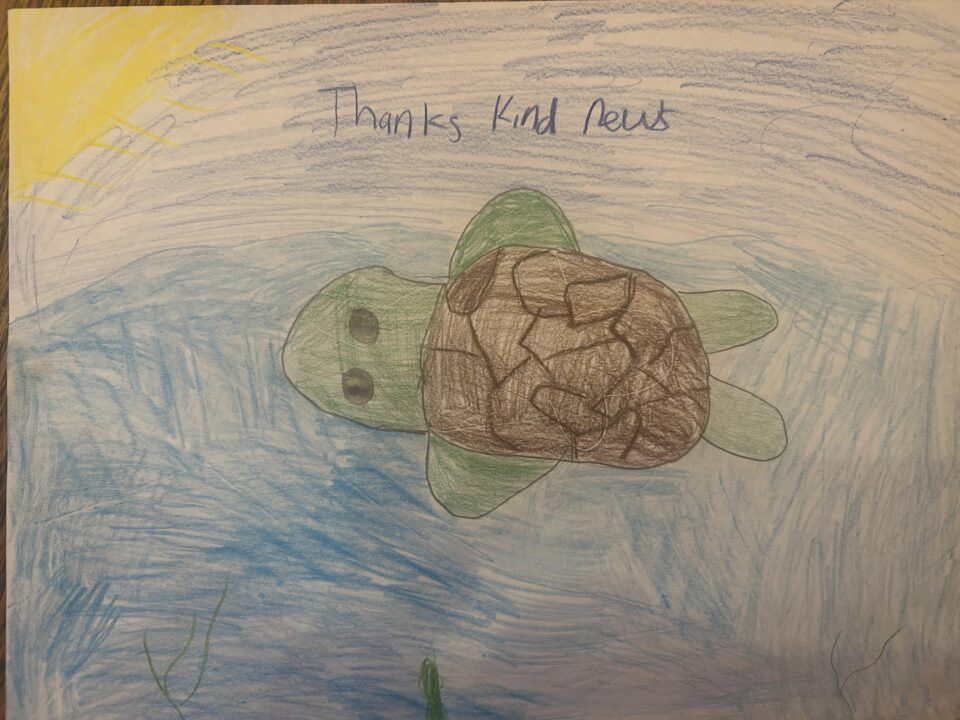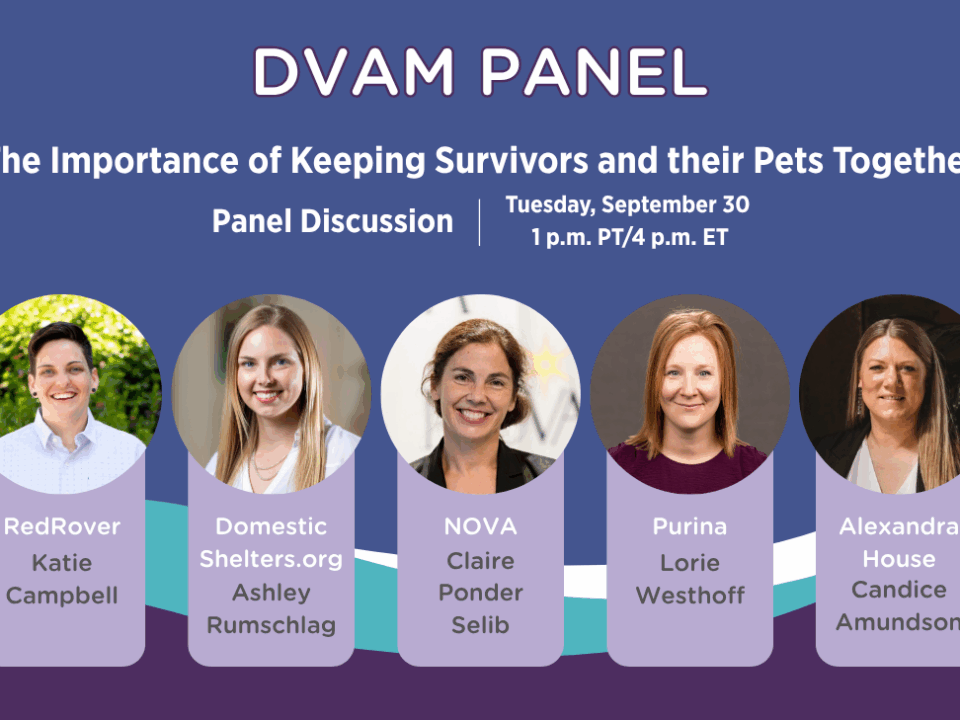Leading with Empathy: Behind the Scenes with Caty
January 10th, 2022
By Helia Zarkhosh, RedRover Communications Coordinator
What does a typical day look like for RedRover staff members? How do we answer the call for help when people have nowhere else to turn? In this series, “Leading with Empathy: Behind the Scenes at RedRover,” we share staff stories about our efforts to bring animals from crisis to care.
In this feature, Project Manager Caty Franco describes her experience fostering an abandoned bunny who had an incredible surprise in store, and what she learned about resilience and fortitude.
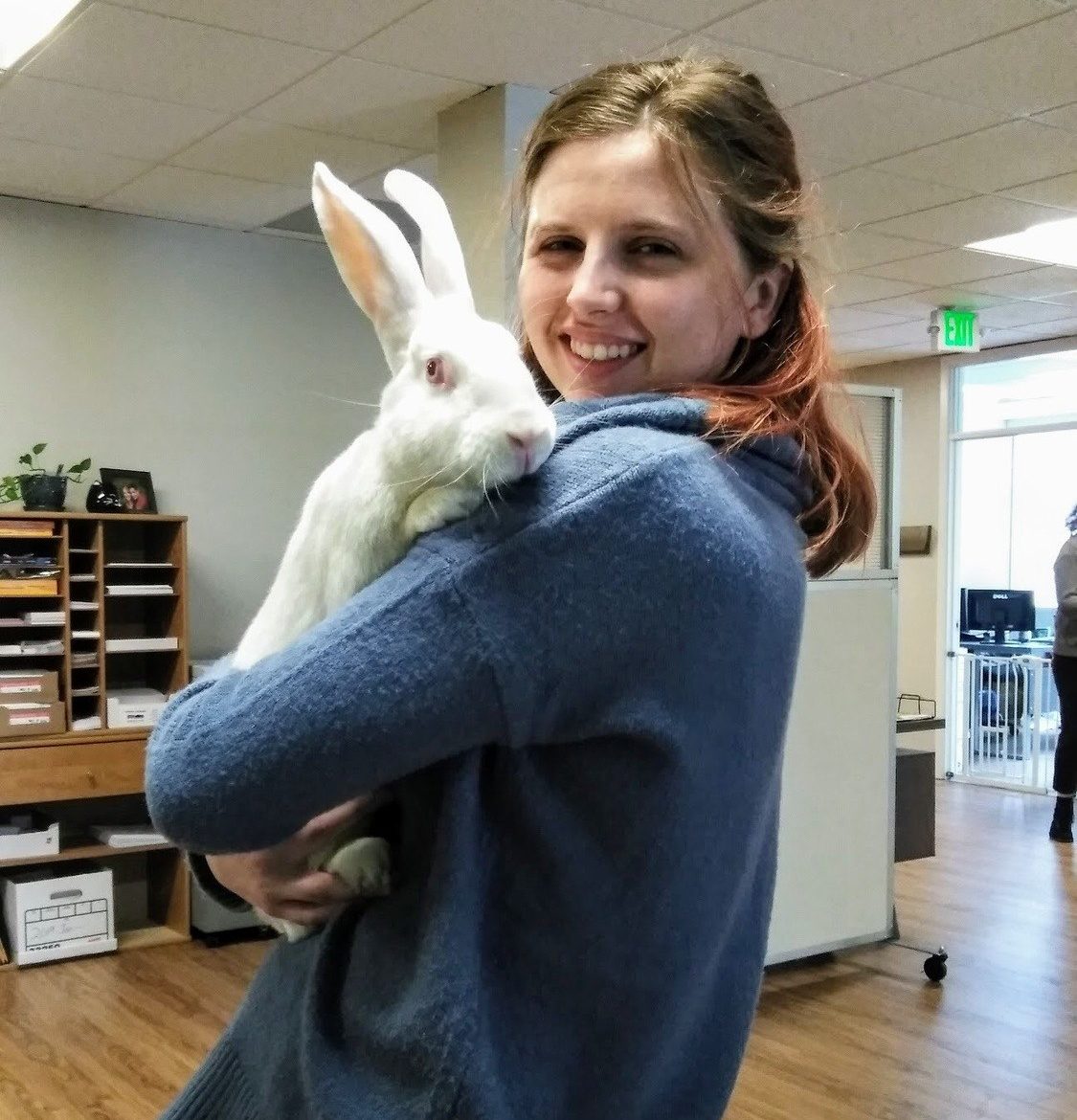
Caty and her adopted bunny Rosie
Just before she joined the RedRover team as Education Coordinator in 2018, Caty foster-adopted a bunny named Rosie from Friends of Unwanted Rabbits. On her first day at RedRover, Caty came across a book from the RedRover Readers program curriculum, The Forgotten Rabbit. On the cover was an illustration of a rabbit who looked just like her Rosie. Caty recalls, “I remember picking up that book and feeling so seen because I had just adopted Rosie. It affirmed I’m at the right job, helping ‘forgotten’ pets like rabbits and other small animals.”
Discovering humane education
Caty grew up around all sorts of animals, including goats, chickens, bunnies, guinea pigs, cats, and dogs, and had been volunteering at shelters with her mother since junior high. So when she began her post-graduation job search, she was delighted to come across a summer camp counselor position at the San Diego Humane Society:
“I just knew that I loved working with and teaching kids, having those relationships and being in community. I had applied for a bunch of camp counselor jobs, and when I found out that there was a field where you could help animals and teach kids, I was like ‘WHAT?! I get to work at an animal shelter and hang out with kids all day?’ It seemed like the perfect thing.”
It was at the San Diego Humane Society that Caty discovered a love for bunnies and the field of humane education.
“I really fell in love with bunnies when I was working at the Humane Society. They had these bunnies who were like ‘ambassador’ bunnies who interacted with the kids and taught kids about the species. They had a really calm temperament and also went to senior facilities and hospitals, and were basically like therapy animals. That was the first time I saw how sweet, special, and unique bunny personalities can be, just like dogs and cats. That’s when I first had the ‘brain worm’ that I wanted one.”
After relocating to Sacramento with her husband, Caty worked in community outreach at the UC Davis Comprehensive Cancer Center, but her heart longed to go back to working with animals. While she searched for the right opportunity, Caty met Rosie – a shy bunny who was only meant to be a foster, as Caty assured her husband. Once Rosie and Caty started bonding, though, it became clear Rosie would serve an even greater purpose in Caty’s life:
“When I first got her, she was really shy and I had a hard time bonding with her. I didn’t understand her body language because I was used to dogs and cats. And learning her body language, the different ways she expressed herself – even though she doesn’t make noises like dogs and cats – it really inspired me to want to share the info with the world and pushed me to go back into humane education.”
Fortunately, Caty found a way back to her roots when she stumbled upon an organization called APHE – the Association of Professional Humane Educators, whose job board led her to a posting for a role with RedRover. Finally, Caty was where she always wanted to be.
The road to rescue
After formally adopting Rosie, Caty became more involved with bunny rescue. She later embarked on a rescue mission with fellow RedRover staff member Minhhan Lam at a local park. Like Rosie, Tanooki was only meant to be a foster… but he soon became a permanent member of the family. This rescue experience was the first of many and an introduction to a chronic pet rabbit dumping and abandonment issue within the city of Sacramento:
Bailey before being rescued
“I’m part of a local bunny lovers’ Facebook group and once in a while there are requests for fosters or help catching an abandoned bunny. The dumping of domestic bunnies at this local park has been an ongoing problem for over 30 years. More recently, there was a lot of energy amongst group members, individuals and rescues, who wanted to find solutions. They were also going to the park and rescuing bunnies and needed foster homes for them. I felt compelled to help because it was this big community effort to solve a problem.”
Bailey soon came into Caty’s care:
“She was a very sweet, gray chinchilla rabbit with really bad ear mites. Since they’re highly contagious, I had to keep her quarantined and wash her bedding often. It was a lot of work keeping up with her condition. Ear mites are a common ailment for bunnies abandoned outside because they are not immune to things like wild rabbits are.
“After a couple weeks, her ear mites had almost entirely cleared up and she started warming up to me. One day I walked into her room to check on her and saw something pink and tiny in her litter box. I picked it up and realized it’s a tiny baby bunny! I’m in shock at this point and called the director of the bunny rescue I was fostering through and she told me to check for others and keep them warm… so I checked her crate and Bailey had nested a bunch of blankets in a corner. As I’m untangling these blankets, I’m finding bunny after bunny after bunny… there were a total of 8 babies! I’m panicking because I had to scramble to figure out how to care for baby bunnies.”
Bailey’s babies
And that’s exactly what she did during a whirlwind crash-course in baby-bunny care. Though two of the babies passed after the first night, Caty learned this is common with large bunny litters, especially since mom was stressed during the early days of her pregnancy, having been left to fend for herself at the park.
Despite the challenges, Caty cherished the experience:
“Seeing them grow, and syringe feeding one of them (Goose) who was missing feedings from mom… it was really rewarding to watch these babies go from little tiny pink nuggets to really big, fluffy bunnies with personalities and so much joy.”
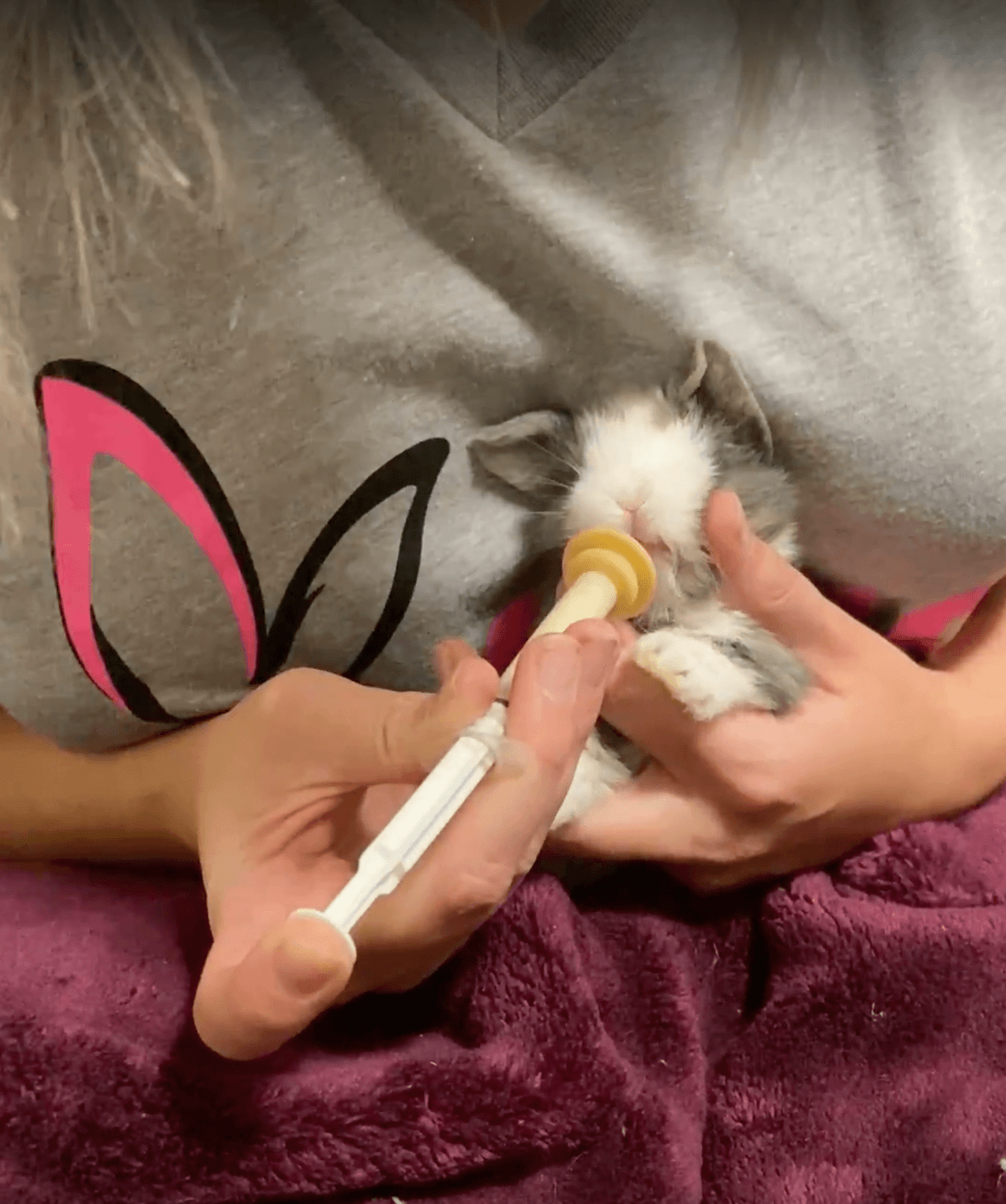
Caty feeds Goose with a syringe
Lessons on resilience and hope
And throughout the baby-bunny journey, Caty learned more about herself and about this species she’d become so passionate about:
“I learned how fragile and special bunnies are and how they really need specialized care from special doctors – you can’t just take a bunny to any vet as it has to be someone who specializes in bunnies or ‘exotic’ animals; that they require a lot of hands-on care when they’re first born. Although mom is supposed to do most of the work, they still require a lot of monitoring to make sure everyone is healthy, and that mom is cleaning up after them.
“I learned how resilient all creatures are. Bailey went from being an outside bunny with really painful ear mites (when she was caught she screamed out of pain…something I didn’t know bunnies do) and being so scared of people to really trusting me and trusting that I was caring for her babies. I watched her grow as a mom and in her ability to love and care for babies.
“I don’t think she even knew she was pregnant and didn’t have a lot of maternal instincts at first. Once they kicked in, I watched her start to nest and check on them and get protective of them when a stranger came in… it was so heartwarming to see how love is so universal and a mother’s love is so primal. Co-parenting with her was such a special and unique experience and it reminded me of my own resilience because it was something I did not think I could do at the time, staying up late to feed babies and managing a ton of medical care.”
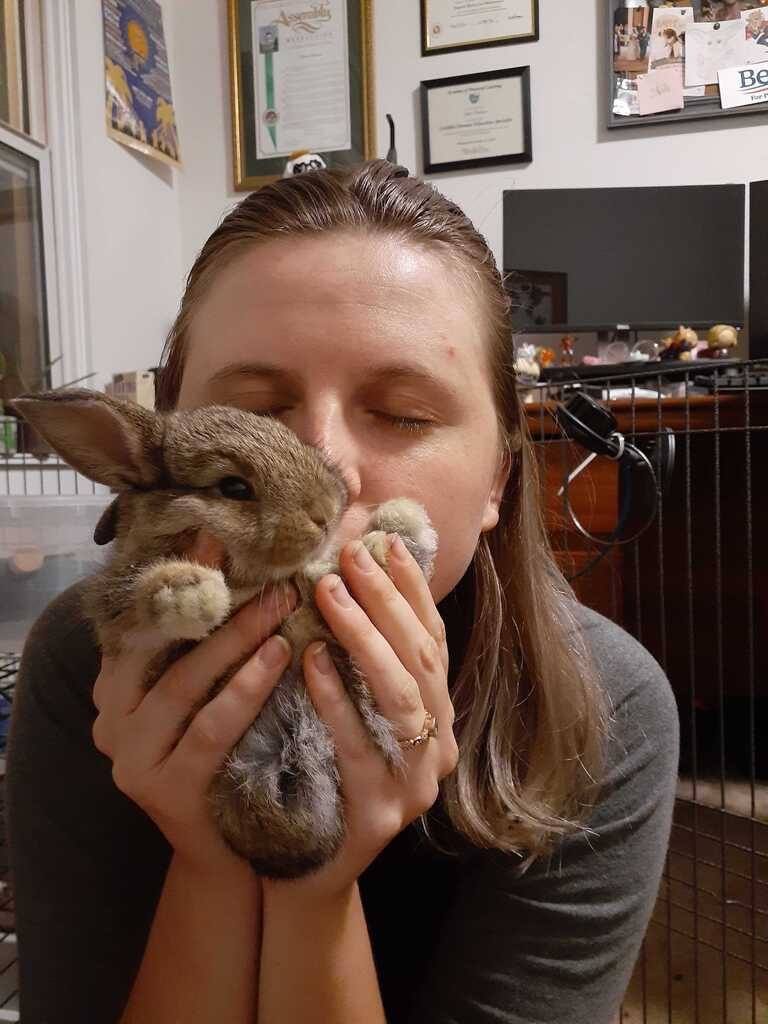
Caty and Kahlua
A powerful mission moment
As is the case for many of us at RedRover, what we do in our personal lives has a direct connection to the work we do within the organization. In participating in the rescue of abandoned bunnies and fostering this new family, Caty was reminded about the importance of programs like RedRover Readers and the field of humane education:
“The experience really showed me why it’s so important to reach kids and offer different narratives about animals that they may not otherwise be exposed to growing up. We learn from our parents, for better or worse, and they pass down narratives about animals, like ‘animals just belong outside’ and, of course, there are different cultural considerations around animal care. That’s why I really like the RedRover Readers approach because we’re providing a new narrative, like ‘What if we took care of animals this way?’
“We don’t come from a judgey or didactic approach telling kids, ‘You must take care of animals this way or that way,’ but we really encourage kids to take the perspective of animals. And that’s something that really motivated me to help with these bunnies. I tried to take their perspective: What would it be like to be outside in the 100+ degree heat in Sacramento as an animal who is heat intolerant to begin with? How would I feel if no one was doing anything to help me? And that’s something we really encourage in Kind News, too, taking the perspective of animals – especially animals you might not think have a perspective.
“Even the idea that an animal has a perspective might be a novel concept to some people. So we very subtly introduce the idea of considering things like, ‘What do you think an animal needs to be happy, healthy, and safe? What do you think this animal is feeling right now? How can you tell? What about their body is telling you how they might be feeling because they can’t use their words to talk with us?’ It’s inspired me to continue speaking up for animals, especially those who don’t have as much of a voice in ‘mainstream’ animal welfare, such as small animals like rabbits, reptiles, guinea pigs, hamsters, rats, etc., that aren’t as ‘mainstream’ as dogs and cats.
“I think there’s a lot of potential for the next generation to be especially kind and caring towards all creatures, great or small.”
Giving a voice to the voiceless
Both her personal and professional experience helped Caty recognize the need for community outreach and education in regards to the abandoned bunnies:
“There’s a lot of controversy in the community around whether or not these abandoned bunnies were domestic and if it was ethical to take them out of the park if they were ‘happy’ there. It reminded me of the importance of humane education and teaching people that domestic rabbits have special needs, and like dogs and cats, they deserve care and treatment when they’re sick. They deserve shelter from the elements. They deserve unlimited access to hay and water and all these basic rights that we understand for dogs and cats but don’t have the same understanding for bunnies.
“While educating the community is ongoing, it just reminds me more of why my work at RedRover and the humane education program is especially important.”
Her message to others? Anyone is capable of helping an animal in need:
“Anyone can step in. This was a sort of grassroots effort to help these abandoned bunnies. It wasn’t any one person or organization – it was just people who cared and asked, ‘How can we make a difference?’ Together, we’ve attended city council meetings and had multiple calls with local law enforcement and animal control to figure out the best way to help them. And I think they’ve collectively caught around 25 bunnies so far, and there are probably 20 still there but there are plans to catch more and find homes for them.
“If you see an issue, if there are animals in need, there are ways you can get involved to help them. For instance, there was already a sign up at the park that said ‘Don’t feed the wildlife,’ and it had a picture of a domestic bunny on it, so we pointed out to officials that it was misleading because these bunnies are not wildlife. So they did take down those signs in response to our efforts and they put up signs that say ‘Do not abandon your animals here.’ I don’t know if that’s deterred people from dumping but it may be making people more aware that it’s something that’s happening there.”
Caty’s role at RedRover and passion for animals, activism, and education are symbiotic – when her personal and professional worlds intersect, which is often, these various facets of her life benefit from one another. She’s a better educator at work because of her experiences in the community. She’s a better rescuer and community advocate because of her RedRover Readers training. And she leads by example to show that a little bit of kindness can truly go a long way.

